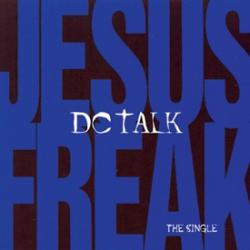Memra/Word/Logos. Most of John's readers would not have been familiar with Philo's speculative Word/Logos philosophy, concepts that were generally restricted to highly Hellenized Jews who had studied Greek philosophy. John's text is broadly compatible with Philo's Word/Logos speculations. While John may have been influenced by such ideas when writing the text, most of his readers would not have read the text in light of Philo's philosophical speculations. On the other hand, the ordinary reader of John in the 1st century would have been familiar with the Aramaic Targum paraphrases of the Bible, since these Targum translations were frequently read in synagogues because of the large numbers of non-Hebrew speaking Jews. It is likely that most Jews in Palestine were familiar with the Aramaic Bible, not the Hebrew Bible.
In Aramaic, a standard term for word is memra. The Aramaic Targums, however, often use memra as a technical term referring to a personification of divine power and presence. The Targums consistently add the phrase "Memra/word of God" to passages in Genesis 1 describing God's creative acts. For example, while the Hebrew Bible reads "And God said, let there be light" (Gen. 1:3), the Aramaic Targum reads "And the Memra/word of God said, let there be light." Variants on this pattern continue throughout Genesis 1. Other allusions to creation in the Targums follow a similar practice. Genesis 14:19 in Hebrew reads "Blessed be Abraham by God Most High, creator of heaven and earth," while in Aramaic it reads: "Blessed be Abraham by God Most High, who by his Memra/Word created heaven and earth." The Isaiah Targums likewise often add the phrase "by my Memra/word" when describing God creating the world (Is. 28:13, 44:24, 45:12). Thus, in the Aramaic Bible—the translation of the Bible with which most Judeans at the time of Jesus would be familiar—the Memra/Word is consistently described as being with God in the beginning, and creating all things. This is precisely how the Logos concept isdescribed in John 1, where John replaces the Aramaic term memra with its Greek equivalent, logos. Thus, for Aramaic speaking Jews of the 1st century, John's Word theology would not have seemed like a radical new idea at all, but a standard way they had already heard creation by the Memra/Word described. What would have been a very radical new idea for most Jews, however, was that John equated this Memra/Logos/Word with Jesus the Messiah, who became flesh (Jn. 1:14).
Finally, it is important to note that the idea that Jesus was a preexistent creator-deity is not a theological innovation by John, but is found in the earliest strata of Christian thought. The letters of Paul—the earliest surviving Christian literature, dating to the early-mid 50s A.D.—contain this same concept (Phil. 2:5-11; Col. 1:15-20; 1 Cor. 8.6). However, this idea of the preexistent creator Messiah, who had glory with the Father before the world existed, is most fully described John 1:1-18.
A Divine Council?
Unlike Matthew and Luke, whose Gospels begin with nativity stories, there is no story in John about the birth of Jesus; his divine mission began long before he was born, and that preexistent divinity is what is really important. John's Gospel starts before the creation of the world with what seems to be the divine council. This divine council is a biblical concept that is probably not familiar to most modern Christians or Jews, but which was an important idea that underlies a number of passages in both the Hebrew Bible and New Testament. Basically, the divine council is a group of celestial beings who form a priestly court around the throne of God in his temple in heaven. In the Hebrew Bible the members of this divine council are variously called the "host/army of heaven" (1 Kg. 22:19, etc.), "gods" (Ps. 82), "sons of God" (Dt. 32:8-9; Job 1-2), "seraphim" ("fiery ones") (Is. 6), or the "holy ones" (Dt. 33:2-3; Ps. 89:5-8; Zech. 14:5). When YHWH is called "God of gods" (ĕlōhê hā-ĕlōhîm; Dt. 10:17, Josh. 22:22; Ps. 84:7) it probably refers to him as the leader (God) of this divine council (of gods, Ps. 82:1).
During Second Temple times the celestial members of this divine council became conflated in Jewish thought with an expanding concept of angels, as reflected in the way the Septuagint Greek translation of the Hebrew Bible (made in the 2nd century B.C.), sometimes uses the Greek term angelos/angel to translate the Hebrew ĕlōhîm/gods (Ps. 8:6, 97:7, 138:1). Similar conflation of the categories of gods and angels can be seen in the Dead Sea Scrolls. Thus, by the time of the New Testament, the ancient divine council had come to be described as the concourses of angels who surround the throne of God in his celestial temple, as reflected most clearly in the book of Revelation.





